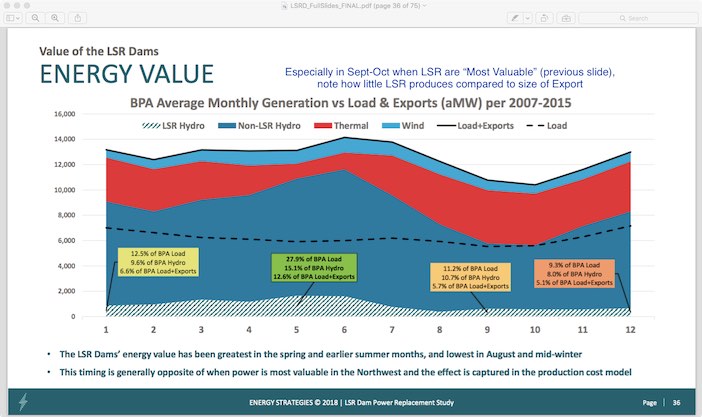forum
library
tutorial
contact

Here We Go Again
by Gordon ForgeyWhitman County Gazette, August 1, 2019
|
the film forum library tutorial contact |

|
Here We Go Againby Gordon ForgeyWhitman County Gazette, August 1, 2019 |
 A privately funded report on the Snake River Dams has just been released. The report recommends that the dams be taken out and the river be restored to natural flow. The study is called the Snake River Dams: Economic Tradeoffs of Removal. It will be discussed at a press conference today in Seattle.
A privately funded report on the Snake River Dams has just been released. The report recommends that the dams be taken out and the river be restored to natural flow. The study is called the Snake River Dams: Economic Tradeoffs of Removal. It will be discussed at a press conference today in Seattle.
The study reports on all aspects of the consequences of the loss of the dams, including transportation, irrigation, recreation, power generation and fish.
Although the study discusses the negatives of breaching the four lower Snake River dams and points out the impact to the area and to specific users, its overall conclusion is that the dams should be removed.
In total, there are 171 pages, including appendices, in the study.
The study states:
Although society will incur substantial costs from dam removal and lost grid services, public benefits relative to costs strongly justify removing the Lower Snake River Dams. In theory, these benefits are large enough to compensate any losers from dam removal. Although there are distributional effects on the regional economy of dam removal if losses are not mitigated or compensated, the surrounding communities in aggregate will experience gains in employment, incomes, and economic output.The breaching of the dams, it is thought, would improve fish runs. The economic impact of the breaching efforts, according to the study, would be offset by economic gains.
The loss of power generation, irrigation, river barging and existing recreation are generally discounted in the study because of perceived additional benefits--in theory.
Just the section on fish runs is enlightening. The revival of the runs in the Snake River was what prompted the initial call for breaching the dams. Then it was claimed Orcas could be saved by bigger fish runs.
The study analyzes the various efforts already made to improve fish passage at the dams. It also covers the threats to the fish in completing their life cycle. They include beneaped (pinniped) predation, predation by birds and other fish, fishing, warm ocean waters, whales and other factors.
It is likely that this report will carry great weight. It is comprehensive, detailed and covers every aspect of the issue.
The specifics, however, have nothing to do with the people who would be affected. The loss of the barge system for getting crops to market, increased dependency on trucking, the increase in utility costs and diminished recreational opportunities are just a few of the negatives about dam breaching.
The issue is complex and touches every life in the area. Breaching the dams, according to the report, cannot guarantee a return of the historically large fish runs or even that they would not be decimated the very act of tearing out the dams. It is evident from other sources, as relayed in this study, that breaching the dams would not dramatically aid the orcas.
A lot is at stake. One answer is not enough to save the fish runs.
Taking out the dams is certainly not the answer, but the rampant predation by birds, sea lions and other fish should be. So should more adaptations of the dams. One thing the study overlooked is that dams and the infrastructure surrounding them also feed people.
learn more on topics covered in the film
see the video
read the script
learn the songs
discussion forum
